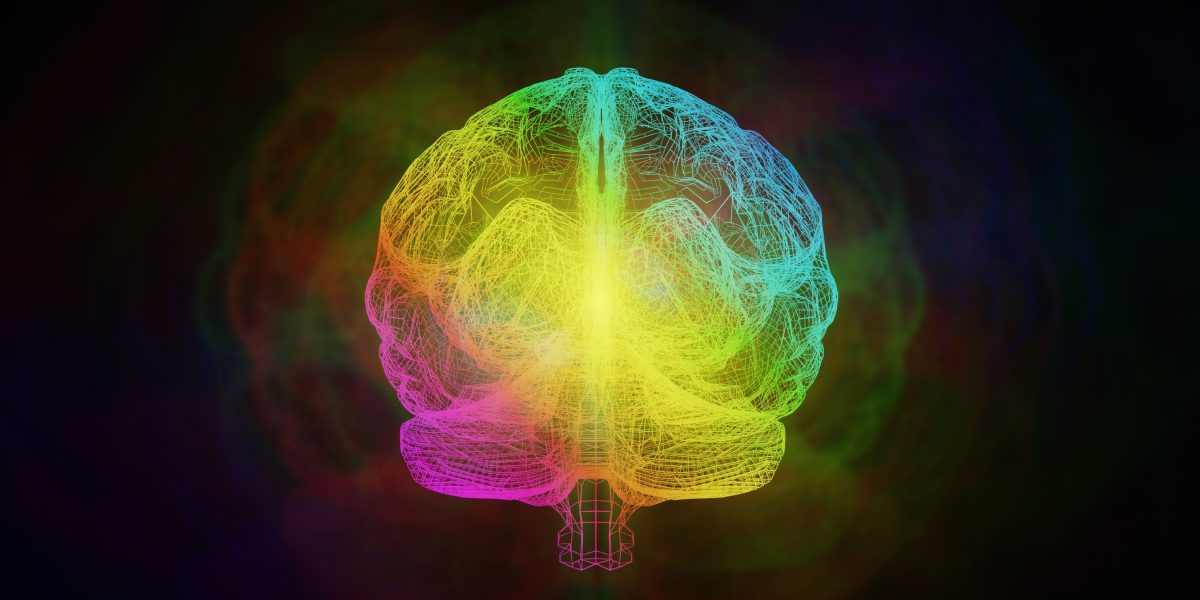
in this article
- The Pessimistic Perspective
- The Optimistic Perspective
- A Mixed Outlook
Are you 18 or older?
Please confirm that your are 18 years of age or older.
You are not allowed to access the page.

Disclaimer: The views and opinions expressed in this article are those of the authors and do not necessarily reflect the official policy or position of the Chemical Collective or any associated parties.
Consciousness alteration is natural and universal among humans. We have been altering our mental states, through the use of exogenous chemicals, for millennia. As the philosopher David Blacker observes in his latest book Deeper Learning with Psychedelics, “We seem to be creatures for whom unadulterated reality has never been quite fully sufficient.” We are beings endowed with this (apparently) inherent need “to stimulate or calm, to fiddle with or completely alter, the qualities of our mental experience,” as the journalist Michael Pollan puts it in his book This Is Your Mind on Plants.
Uninterrupted sobriety seems to be not good enough – not pleasurable, exciting, novel, interesting, or satisfying enough. And so we have discovered and manipulated all sorts of natural plant- and mushroom-based drugs to alter our subjective experiences, thereby making reality more pleasurable, exciting, novel, interesting, and satisfying.
This is not to say abstinence from drugs can’t be widespread in a culture and can’t be part of a healthy and fulfilling life, as evidenced by teetotal or drug-free religious and spiritual communities, as well as people who improve their lives after giving up drugs. But this doesn’t discount the observation that there is, in general, a human propensity to alter consciousness. This is commonly, easily, and reliably done through the use of powerful psychoactive drugs, but even those abstinent from such compounds may still opt for milder forms of mind alteration, which can be achieved through caffeine, exercise, meditation, music, lucid dreaming, adrenaline sports, and breathwork.
Humans also aren’t unique in terms of the drive to use drugs to alter consciousness. The psychopharmacologist Ronald Siegel points out in his book Intoxication: The Universal Drive for Mind-Altering Substances that “intoxication with plant drugs and other psychoactive substances has occurred in almost every species throughout history. There is a pattern of drug-seeking and drug-taking behavior that is consistent across time and species.” He offers some examples:
After sampling the numbing nectar of certain orchids, bees drop to the ground in a temporary stupor, then weave back for more. Birds gorge themselves on inebriating berries, then fly with reckless abandon. Cats eagerly sniff aromatic “pleasure” plants, then play with imaginary objects. Cows that browse special range weeds will twitch, shake and stumble back to the plants for more. Elephants purposely get drunk on fermented fruits. Snacks on “magic mushrooms” cause monkeys to sit with their heads on their hands in a posture reminiscent of Rodin’s Thinker…. Monkeys and baboons, which share our tastes and temperaments, learned to use hallucinogens and tobacco to relieve boredom with all the shrewdness and zest of human users.

Blacker notes, “This widespread and abiding – and apparently pan-species – implied dissatisfaction with consensus reality indicated by such instances is an abiding mystery that modern inquiry is only beginning to explore.” In humans especially, normal reality is not satisfactory, which seems strange: Why would an organism, which evolved to fit a particular ecological niche, want to remove itself from sober participation in that niche? On the one hand, we might suggest that being far removed from the ecological niche that we evolved to live in – residing now in concrete jungles – accounts for this drive to alter our minds. Our immediate environment is alien to our nature, causing us dissatisfaction, which thereby motivates us to compensate for this negative effect through drug experiences.
However, this argument doesn’t explain why psychoactive drug use – particularly the use of so-called ‘entheogens’ or ‘plant teachers’ – is commonplace in close-knit human communities living in natural surroundings. The need to remove oneself from everyday consensus reality, therefore, is an existential question. There is something about the human condition more generally that motivates us to tinker with our minds through the (ritualistic and non-ritualistic) use of naturally occurring drugs. I believe we can separate existential explanations into two broad categories: pessimistic and optimistic varieties. A mixture of both types of explanation may hold the most explanatory power, yet the question of why reality is insufficient to us “may never be answered fully,” as Blacker suggests.
In his essay 1933 essay ‘The Last Messiah’ (which I’ve summarised and analysed here), the philosopher Peter Wessel Zapffe suggested that humans developed various coping mechanisms to deal with what he called our ‘overabundance’ of consciousness or intellect. In other words, we thought we had over-evolved: we have essentially become too aware and intelligent for our own good. Awareness of the meaninglessness of the world and the extent of suffering in it weighs us down. Through techniques like avoidance, the creation of values or ideals, distraction, and creative projects, we are able to limit the contents of our consciousness, closing us off from confronting – what Zapffe saw as – the tragic nature of reality.
Perhaps, then, all manner of drug use can be seen as a coping mechanism – a way of ignoring, reducing, or transforming the anxiety and dissatisfaction associated with the human condition. Nonetheless, in my analysis of Zapffe’s essay, I note that we can’t categorise all drugs as ‘consciousness limiting’. Indeed, psychedelics are commonly referred to as ‘consciousness-expanding’ drugs. While they can, sometimes, be used in an escapist sense, they often lead to confrontations with reality, including the more painful aspects of it, such as widespread human and non-human animal suffering, and the possible lack of inherent meaning and purpose in the universe.
Nevertheless, rejecting a Zappfian view of drugs (including psychedelic drugs) doesn’t discount a more general pessimistic view of consciousness alteration via drugs. We are still left with the existential problem of (let’s call it) the insufficiency of normal reality. Even when we take the unique effects of psychedelics into account, we could potentially still view consciousness alteration as solving problems that fall under the insufficiency of normal reality, including boredom, existential distress, the asymmetry between pain and pleasure, and disenchantment. Let’s explore these problems in turn and how drugs solve (or attempt to solve) them:
Now that I’ve addressed some pessimistic interpretations of the insufficiency of normal reality, we can move on to a more optimistic outlook.

The use of psychedelics may predate the emergence of anatomically modern humans, and their use may have even been adaptive for millions of years in our evolutionary history. The anthropologists José Manuel Rodríguez Arce and Michael Winkelman propose in their paper ‘Psychedelics, Sociality, and Human Evolution’ that “incidental inclusion of psychedelics in the diet of hominins, and their eventual addition to rituals and institutions of early humans could have conferred selective advantages.” (This is a more academic version of Terence McKenna’s ‘Stoned Ape Theory’.) The authors continue:
Hominin evolution occurred in an ever-changing, and at times quickly changing, environmental landscape and entailed advancement into a socio-cognitive niche, i.e., the development of a socially interdependent lifeway based on reasoning, cooperative communication, and social learning. In this context, psychedelics’ effects in enhancing sociality, imagination, eloquence, and suggestibility may have increased adaptability and fitness. We present interdisciplinary evidence for a model of psychedelic instrumentalization focused on four interrelated instrumentalization goals: management of psychological distress and treatment of health problems; enhanced social interaction and interpersonal relations; facilitation of collective ritual and religious activities; and enhanced group decision-making…integration of psilocybin into ancient diet, communal practice, and proto-religious activity may have enhanced hominin response to the socio-cognitive niche, while also aiding in its creation. In particular, the interpersonal and prosocial effects of psilocybin may have mediated the expansion of social bonding mechanisms such as laughter, music, storytelling, and religion, imposing a systematic bias on the selective environment that favored selection for prosociality in our lineage.
With this evolutionary account in mind, one could argue that drug use (again, psychedelic use especially) is a part of human nature but in a way that offers several important advantages. Hence, we don’t have to view psychoactive drug use in negative terms (e.g. as a form of unhealthy escapism). Instead, we can view consciousness alteration as helping to solve certain problems in healthy ways, which in turn leads to diverse benefits, including group bonding and the expansion and enhancement of fulfilling activities like comedy, laughter, art, music, sex, and storytelling.
In a similar evolutionary vein, the writer Mark Vernon defends the trance hypothesis of the origin of religion in an article for Aeon. This is an alternative and, Vernon argues, a superior hypothesis, to the false agency and Big Gods hypotheses. The latter assert, respectively, that religion arose from humans’ supposed tendency to overattribute agency to natural phenomena or it arose from the invention of powerful gods who could oversee, punish, and reward human actions, thereby enabling humans to build big societies without becoming factious and splintered. Putting the merits of each hypothesis to one side (they deserve a fuller analysis), the trance hypothesis – put forward by the evolutionary psychologist Robin Dunbar – is as follows:
Dunbar believes that a few hundred thousand years ago, archaic humans took a step that ramped up this capacity [to experience wonder]. They started deliberately to make music, dance and sing. When the synchronised and collective nature of these practices became sufficiently intense, individuals likely entered trance states in which they experienced not only this-worldly splendour but otherworldly intrigue. They encountered ancestors, spirits and fantastic beasts, now known as therianthropes. These immersive journeys were extraordinarily compelling. What you might call religiosity was born. It stuck partly because it also helped to ease tensions and bond groups, via the endorphin surges produced in trance states. In other words, altered states proved evolutionarily advantageous: the awoken human desire for ecstasy simultaneously prompted a social revolution because it meant that social groups could grow to much larger sizes via the shared intensity of heightened experiences.
Ancient humans, then, discovered techniques of ecstasy, and as Winkelman suggests too, these altered states are adaptive, conferring social benefits not before realised. So an optimistic interpretation of the impulse to use drugs is that – at least when used healthily, not destructively – they promote both deeper connections as well as a greater number of connections. I also think we can offer optimistic counterarguments and counterexamples to the list of pessimistic conclusions above:
We can also offer a more optimistic perspective on alcohol use (despite the many physical and psychological harms it can cause). The philosopher Edward Slingerland makes a case for this counterintuitive line of thought in his book Drunk: How We Sipped, Danced, and Stumbled Our Way to Civilization.
Drawing on evidence from a variety of disciplines – archaeology, history, cognitive neuroscience, psychopharmacology, social psychology, literature, and genetics – Slingerland argues that alcohol-induced intoxication has helped to solve a number of human challenges: alleviating stress, building trust, and enabling a species with a tribal mentality to cooperate with strangers. He claims our desire to get drunk, and the individual and social benefits provided by drunkenness, led to the creation of the first large-scale societies. Thus, intoxication helped forge civilisation itself. This fits in with the narratives offered by Winkelman and Vernon, and it challenges the idea that we should simply write alcohol off as a wholly harmful drug.
Considering all the points we’ve looked at so far, it is also possible to offer a mixed (but non-contradictory) outlook on drug use, as it relates to the human condition. As the neurologist Oliver Sacks writes in his book Hallucinations,
To live on a day-to-day basis is insufficient for human beings; we need to transcend, transport, escape; we need meaning, understanding, and explanation; we need to see overall patterns in our lives.
All of these impulses exist in us, and drugs can satisfy all of them (although some of them achieve this more effectively, and safely, than others).
To use psychedelic parlance, the ‘set and setting’ is important in determining whether a pessimistic or optimistic perspective holds more true in the context of drug use. The ‘set’ (e.g. the intention, reason, and expectation of the user) and the ‘setting’ (e.g. the people one has the experience with, and the ritualistic and cultural elements involved) help shape the outcome, benefits, and risks of the experience. The type of drug, the dose, if used in combination with another drug, and the quality of the individual’s experience are all relevant factors too.

Essentially, though, we can safely place consciousness alteration through drugs as part and parcel of the human condition. We have a deep history of psychoactive drug use, and this pattern of behaviour isn’t going away. Moving forward, however, we can further explore links between drugs and existentialism – considering how altered states intersect in meaningful ways with our most fundamental concerns in life.
Sam Woolfe | Community Blogger at Chemical Collective | www.samwoolfe.com
Sam is one of our community bloggers here at Chemical Collective. If you’re interested in joining our blogging team and getting paid to write about subjects you’re passionate about, please reach out to David via email at blog@chemical-collective.com

Welcome to Chemical Collective.
Create an account to earn 200 welcome points.
Already have an account? Sign in


Check out our Community Blog and get involved with the conversation. You will be awarded 50 x ChemCoins for each comment up to a limit of 250 total ChemCoins.


Have you purchased any of our products? Reviews and reports are so important to the community. Share your honest opinion, and we’ll reward you with 50 ChemCoins for each review!


Every time you complete an order with us, you’ll be awarded ChemCoins for each Euro spent.
Welcome to Chemical Collective.
Create an account to earn 200 welcome points.
Already have an account? Sign in

Earn commission every time someone makes a purchase through your link.
When you become an affiliate, you will be allocated a unique link to share with your friends, followers, subscribers, or Aunt Susan.
You can choose to payout the commission earned once per month, or save it up to receive on a rainy day! Commission earned is 5% of the total order value per referral.
Contact us to join the Chemical Collective family and become an affiliate.
share your toughts
Join the Conversation.